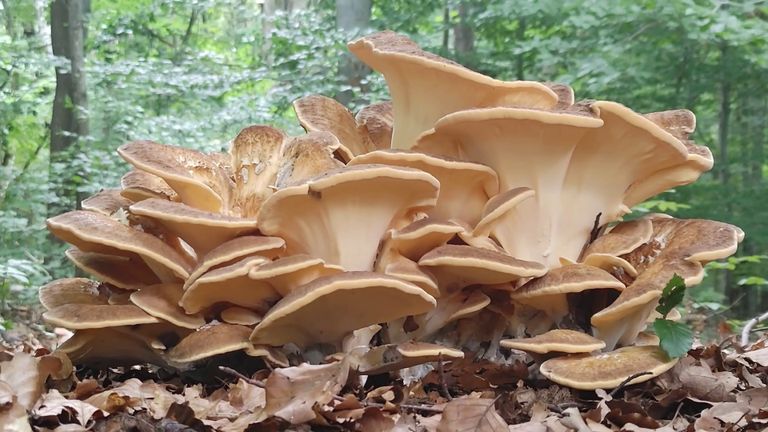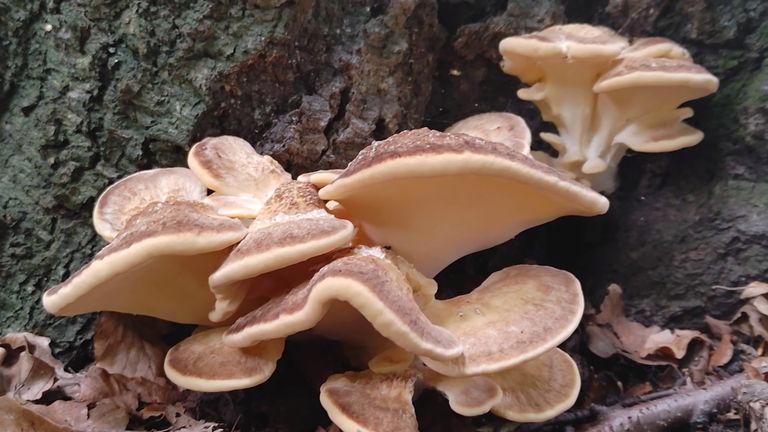
Scientific studies in mice have shown that the methanol extract of this fungus contains compounds that are destructive to 3LL cancer cells in mice

It is one of the largest hub mushrooms in the world, both in terms of size and weight. A mushroom consists of many hats, joined together at the base. The hats are tiled.

The whole mushroom can weigh up to 45 kg, and have a diameter of more than 1 m. A single cap has a semicircular, scapular or lingual shape and can be up to 30 cm in diameter.

The color of the hat depends on the age of the mushroom. The young fruiting body is yellow-brown, sometimes ocher or dark red-brown. The edges of the young fruiting body are lighter, rounded. The surface of the hat is dull, grained, felt, wrinkled.

The leg is fused at the base into one trunk, it is very short.

Tubes are short, whitish in color, after damage they turn brown, and later turn black. The pores are very fine, circular.

The flesh is white in color, tough, fibrous, blackening on the cross-section, with a strong mushroom odor and a sour taste.


The fungus is becoming rarer and therefore it is under species protection in Poland. The fruiting bodies are annual, appear in summer and grow until autumn. Their habitat is the basis of dead deciduous trees, rarely living trees. They grow on ash, maple, oak, birch, hornbeam, poplar and beech stumps, very rarely on conifers.

The mushroom in the form of young fruiting bodies is edible, while the older fruiting bodies are hard and stringy and therefore unfit for consumption.


